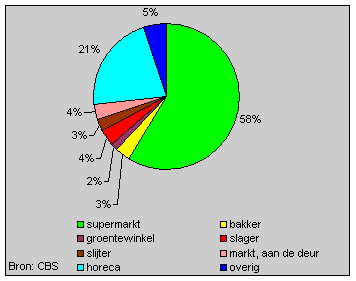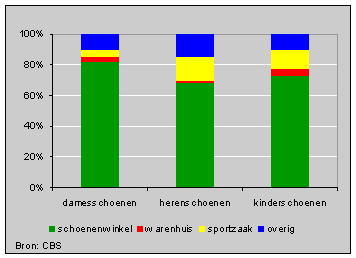Where do the Dutch shop?

Dutch households spent an average eleven thousand euro on shopping and eating and drinking out in 2000.
Household spending in shops, restaurants, pubs etc. 2000

Money spent in all kinds of outlets
Nearly thirty percent of Dutch household spending in the category shopping and eating and drinking out was spent in supermarkets. Clothes shops, petrolstations and restaurants and pubs accounted for nine percent of consumers’ money spent in this category, while five percent was spent in shops selling home furnishings and just over three percent in department stores. The remaining purchases were bought in smaller shops such as butchers, florists or greengrocers.
Most food bought in supermarket
Households spent an average 4,100 euro on food in 2000. Over half was of this amount went into supermarket tills. Twenty percent of money spent on food and drink was spent in restaurants, cafés, bars and pubs; this includes money spent in company canteens. The remaining amount was spent in butchers’ and greengrocers’ shops and in off licences and on street markets.
Spending on food by type of retail outlet, 2000

Spending on clothes
Dutch households spent an average 1,300 euro on clothes in 2000. Clothesshops were the most popular, accounting for two-thirds of shoppers’ money. Department stores came second with one seventh of clothes spending, while shopsselling sports items, street markets and mail order companies accounted for smaller parts of consumers’ clothes budgets.
Shoes often bought in sports shops
Footwear accounted for an average 260 euro of the Dutch household budget in 2000. More than 75 percent of this was spent in shoe shops, but shops selling sportswear also accounted for a substantial amount: fifteen percent of all men’s shoes and thirteen percent of all children’s shoes were bought in shops selling sports items. Department stores were less important for shoe shoppers.
Spending on shoes by type of retail outlet, 2000

Hub Erkens